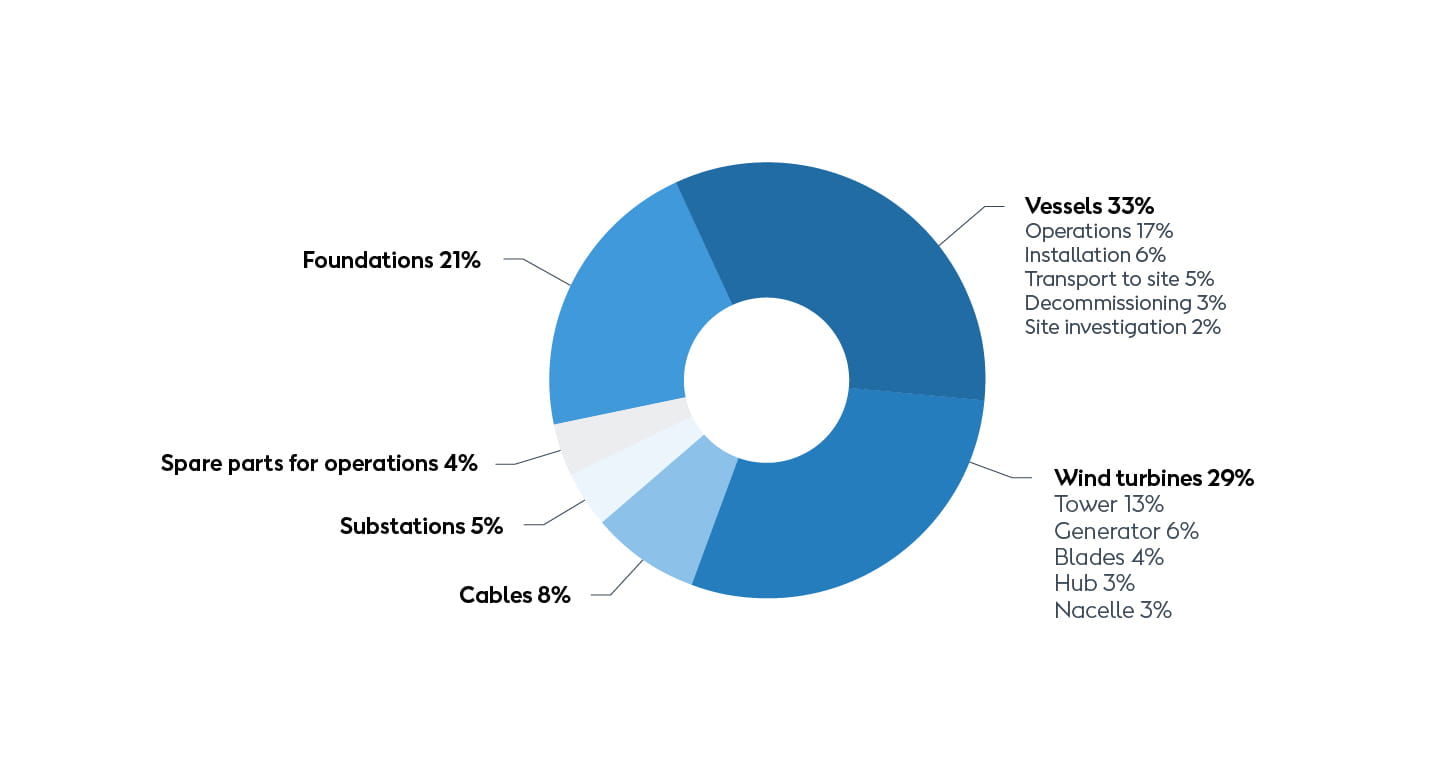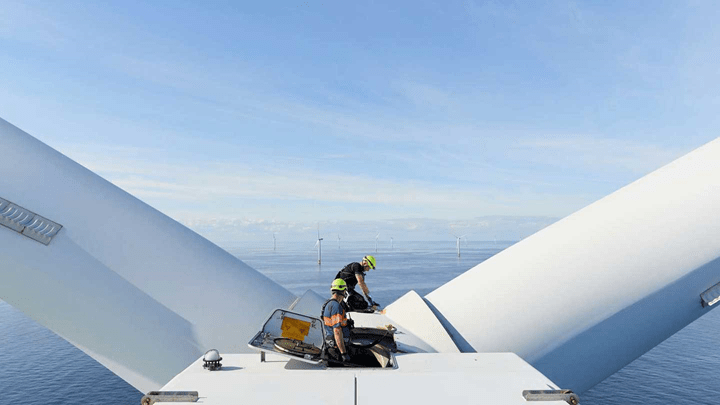Although we produce renewable electricity with close to zero direct emissions, there are still emissions linked to the manufacture, installation, and transportation of our renewable energy assets. As we continue our green build-out, these emissions will rise. Therefore, we need to find ways to decouple the growth of our build-out from the growth of emissions in our supply chains. Our starting point is to understand these emissions better.
To increase transparency of the supply chain emissions linked to our offshore wind farms, we have started to report using asset-specific carbon calculations. To do this, we use lifecycle assessments (LCA) of emissions for each of our offshore assets in our external reporting.
LCA is a scientific approach that enables us to quantify the environmental impacts from the manufacture, installation, and transportation of our offshore wind farms more accurately. Before 2022, we relied on LCA studies of an average wind farm to calculate our supply chain emissions – a common approach in the industry. These average calculations do not reflect specific asset characteristics.
At first glance, the shift from average LCAs to asset-specific LCAS may seem like a minor change. But it will significantly improve our data accuracy, and our numbers will more correctly reflect design choices and amounts and types of materials we use. For example, the figures will reflect the amount of fuel used by installation vessels during the installation of each offshore wind farm.
The new approach will also more accurately reflect the actions we communicate to reduce our supply chain emissions. Reporting on asset-specific supply chain emissions enables better tracking of our progress towards our 2040 net-zero target, linking our actions and design choices to the emissions we report on externally.
To increase transparency of the supply chain emissions linked to our offshore wind farms, we have started to report using asset-specific carbon calculations. To do this, we use lifecycle assessments (LCA) of emissions for each of our offshore assets in our external reporting.
LCA is a scientific approach that enables us to quantify the environmental impacts from the manufacture, installation, and transportation of our offshore wind farms more accurately. Before 2022, we relied on LCA studies of an average wind farm to calculate our supply chain emissions – a common approach in the industry. These average calculations do not reflect specific asset characteristics.
At first glance, the shift from average LCAs to asset-specific LCAS may seem like a minor change. But it will significantly improve our data accuracy, and our numbers will more correctly reflect design choices and amounts and types of materials we use. For example, the figures will reflect the amount of fuel used by installation vessels during the installation of each offshore wind farm.
The new approach will also more accurately reflect the actions we communicate to reduce our supply chain emissions. Reporting on asset-specific supply chain emissions enables better tracking of our progress towards our 2040 net-zero target, linking our actions and design choices to the emissions we report on externally.

These numbers are based on an Ørsted life cycle assessment of an average offshore wind farm. In practice we see substantive variation in the total emissions and the drivers of emissions between wind farms due to differences in factors such as (but not limited to): The distance to shore, depth of waters, wind farm layout, wind turbine capacity, and specific low-carbon solutions implemented in the supply chain and operations of the wind farm.
Forging a common standard
Measuring and reporting on supply chain emissions can help guide companies’ decarbonisation efforts. It allows them to understand where emissions stem from, while increasing transparency around environmental impacts. This is important for governments, customers, investors, and other key stakeholders, who are increasingly requesting more insight into supply chain emissions.But companies in today’s offshore industry use different methodologies to gauge this, making it difficult to understand and compare supply chain emissions across offshore wind farms.
In collaboration with peers in the energy industry, we are working towards a standardisation of LCA methodologies for offshore wind farms to enable comparability. We have co-founded a task force in WindEurope and established a joint industry programme together with the Carbon Trust and ten energy peers to develop a common standard for measuring lifecycle emissions from offshore wind farms.
A common standard will improve transparency within the industry and allow customers to compare the carbon footprint of different solutions from different offshore wind developers. This can help incentivise investments in low-carbon solutions.
